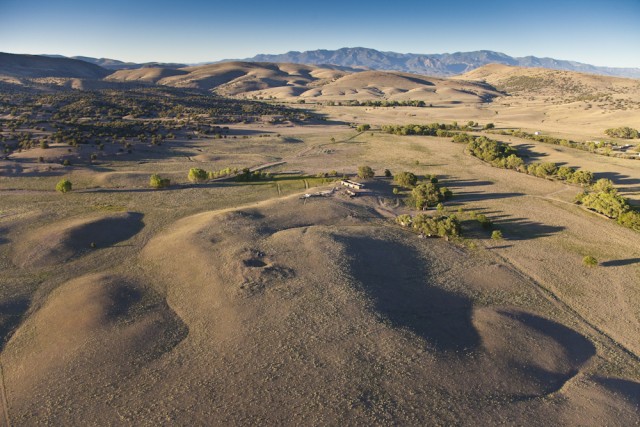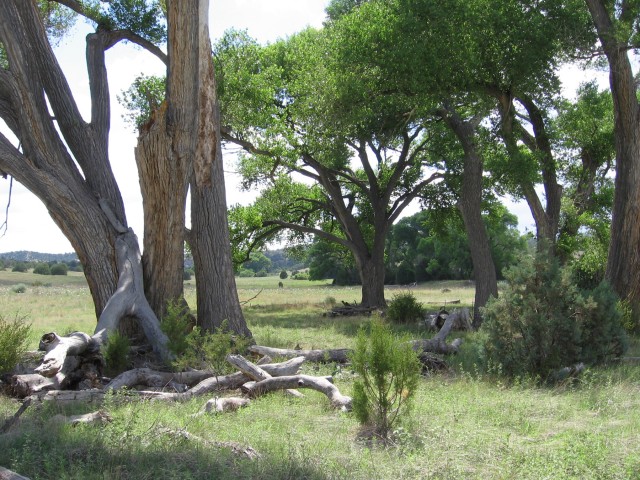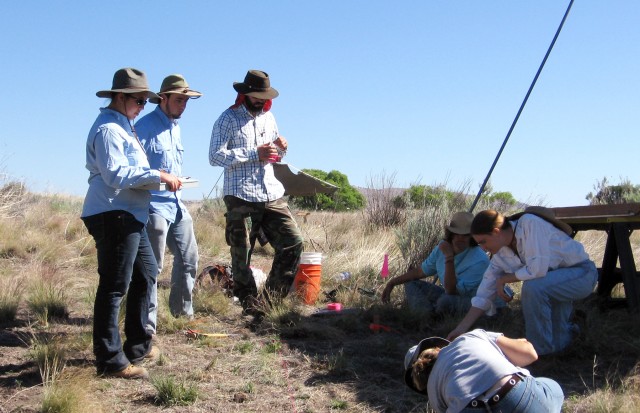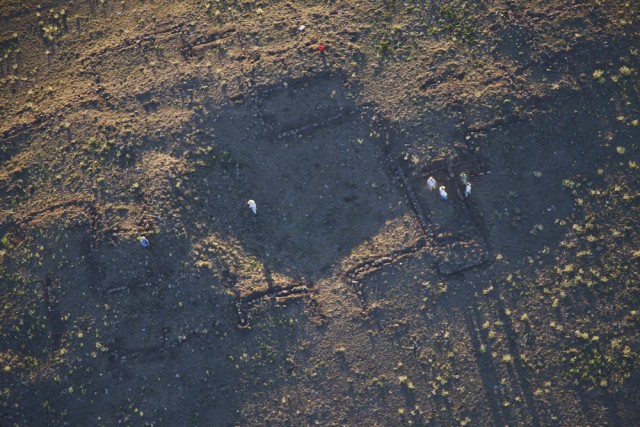- Home
- >
- Preservation Archaeology Blog
- >
- The Fornholt Retrospective: An Introduction
(December 6, 2016)—The archaeological site that we call Fornholt sits on a ridge overlooking the grassy, well-watered valley that surrounds Mule Creek, in southwestern New Mexico. Today, the most visible parts of the site are the two architectural mounds—the remains of masonry room blocks that likely date to sometime between the late 1100s and mid-1200s.
There’s much more to Fornholt, including an unknown but probably substantial number of pit houses that predate the room blocks, but our interest was primarily in this latest settlement. We were especially interested in what appeared to be a great kiva surrounded by the larger southern room block.

I first came to Mule Creek in 2008—the first year of Archaeology Southwest’s (then the Center for Desert Archaeology) field work in the Upper Gila, carried out in collaboration with Hendrix College—as a volunteer (and a very young grad student). I wasn’t really anticipating anything long term. I had time on my hands because of a cancelled project, but my research interests were more along the lines of Chacoan great houses and spatial analysis, and my mental image of southwestern New Mexico was based primarily on the “DUST STORMS MAY EXIST” signs and endless yuccas along I-10.

My expectations about the landscape were wrong, of course, and I found myself drawn to the place, the organization, the people, and, yes, the pottery at the 3-Up site, where we worked that summer. (I wrote about the results of that work a bit in my previous post.) We first recorded Fornholt and carried out some very limited testing there in 2009, primarily to provide context for people’s later (Cliff phase or 1300s) use of other sites in the valley. When the opportunity arose to direct excavations at Fornholt as part of a dissertation project, I took it.

There were two things I found (and still find) particularly intriguing about Fornholt. This first is its general location. Between around 1000 and 1300, Mule Creek was part of a kind of social borderland, positioned between two cultural traditions (I’ll come back to the details of this later—for the time being, just take my word for it). Also, the nearby Cliff Valley—where the archaeology in other periods seems to be very similar to that in Mule Creek—was supposed to have been devoid of settlement during the 1200s. Fornholt was clearly an exception to that pattern.
I was curious to know what it would have meant to live along that kind of frontier. And getting a better handle on what was going on in the region during the 1200s would help to put Archaeology Southwest’s ongoing work on Salado settlement in the subsequent time period in a local historical context.
The other element that drew me to the site was Fornholt’s great kiva. I had a longstanding interest in the social roles played by “public” or religious architecture, and Fornholt’s borderland location made for a particularly interesting comparison with more “centrally located” great kivas to the north, in the area around Reserve, NM, that were in use during the same time period.

Also, while the interpretation of Chacoan public architecture has practically become a cottage industry, and excellent work has been done on Pithouse period great kivas in the Mimbres area, the archaeology of the San Francisco and Blue River drainages hasn’t been a hotbed of archaeological debate since the 1950s. Several great kivas had been excavated in that area beginning in the mid-twentieth century, and those collections and records were ripe for reexamination.
Most of our excavation at Fornholt was carried out in 2011 and 2012. You can still read some of our posts from the field in the depths of this blog. I should add here that I’m deeply grateful to the site’s owners, as well as to all of the supervisors and students who worked at Fornholt. Since 2012, we’ve more or less finished analyzing the artifacts and samples from the site. I’ve looked at the collections and records from other great kivas or nearby contemporary sites for comparison with Fornholt and completed a dissertation (a minor item). We’re now in the final stages of preparing a technical report on the site and are processing the collection for curation (storage in a museum).
The work confirmed some of our first impressions of Fornholt; in other ways it surprised us (or at least me), offering unexpected opportunities and challenges. My goal in these posts is to provide an overview of our conclusions and how we reached them—with luck, I’ll manage to do it in a way that’s a least a little entertaining.
Explore the News
-
Join Today
Keep up with the latest discoveries in southwestern archaeology. Join today, and receive Archaeology Southwest Magazine, among other member benefits.
